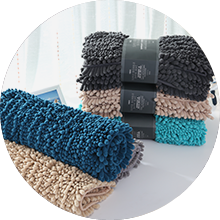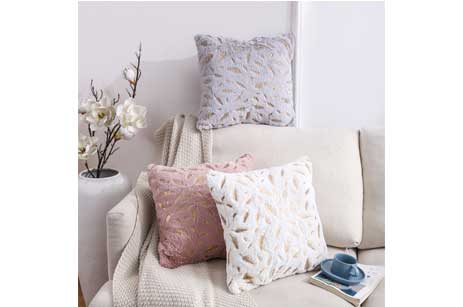Home textiles are called "soft decoration" in the home decoration package, and it plays a decisive role in creating a home atmosphere. Home textiles are understood by many people as bedding. In fact, home textiles refer to all textile products used in the family, including daily textile products and decorative textile products.
In home textiles, the cloth on the surface is called fabric, and the selection of home textile fabrics depends on the texture, color and pattern of the raw materials. For customers, the most concerned thing is the fabric, and the most asked question is also about the fabric. The requirements on home textile fabric are high. In addition to internal quality, it must also have a good appearance, and the tear strength, abrasion resistance, moisture absorption, softness, shrinkage, and color fastness of the fabric must meet national standards or industry standards. Therefore, fabric knowledge is very important for shopping guides.
1. Yarn fineness of home textiles
In the sales of home textiles, shopping guides will always face the concept of yarn count. Yarn count, that is, the imperial count, is an indicator of the fineness of the yarn. It is defined as a yarn fineness of 1 when the length of a pound of cotton yarn is 840 yards at a predetermined moisture regain of 9.89%. If a pound of yarn has a length of 10 x 840 yards, its fineness is 10. The larger the yarn count, the finer the yarn. It should be noted that yarn count is a non-legal indicator of fineness. The legal indicator currently used for fineness is linear density, and its unit of measurement is Tex. The higher the linear density, the finer the yarn.
2. Fabric density of home textiles
The warp and weft density of a fabric refers to the number of warp or weft yarns per unit length of the fabric along the warp and weft directions. The national standard stipulates that cotton fabrics and wool fabrics are expressed in metric density, that is, the number of warp and weft yarns within a width of 10 cm. The fabric density of home textiles China and the warp and weft density have an important impact on the quality, fastness, hand feel, air permeability and cost of the fabric, so the density is one of the important indicators of the fabric.
3. Fabric tightness of home textiles
The tightness of fabrics composed of yarns of different warp and weft yarn densities (yarn count) cannot be measured by the density index. The warp and weft yarn densities (yarn count) and density must be considered at the same time to obtain an index representing the tightness of the fabric, that is, the fabric tightness. The concept of tightness in the warp and weft direction of home textile fabrics refers to the ratio of the diameter of the warp and weft yarns to the average center distance between the two warp and weft yarns, expressed as a percentage.
4. Fabric shrinkage rate of home textiles
Fabric shrinkage rate of home textiles refers to the percentage of fabric shrinkage after washing or entering water. In the national standard, the shrinkage rate of fabrics is required to be controlled within 4%. The level of fabric shrinkage is also one of the conditions to measure the quality of the product.

 Español
Español English
English русский
русский




